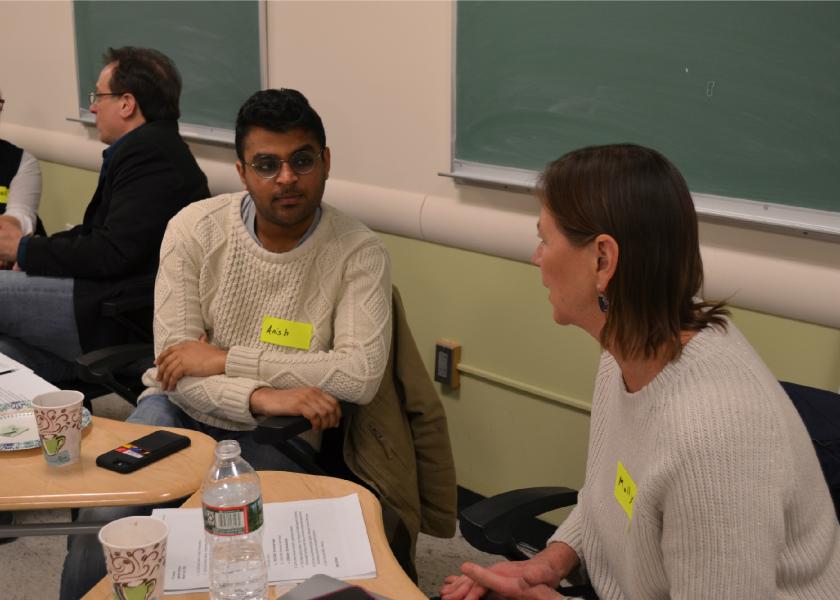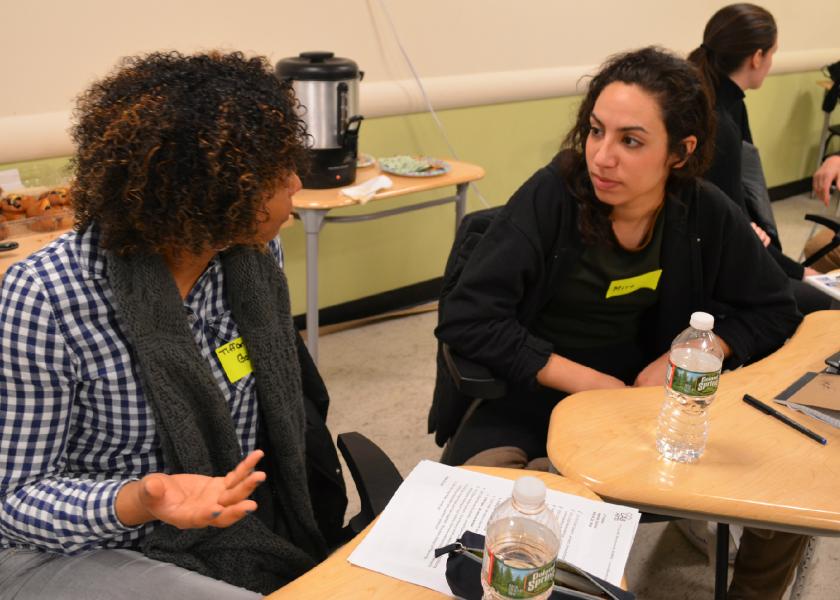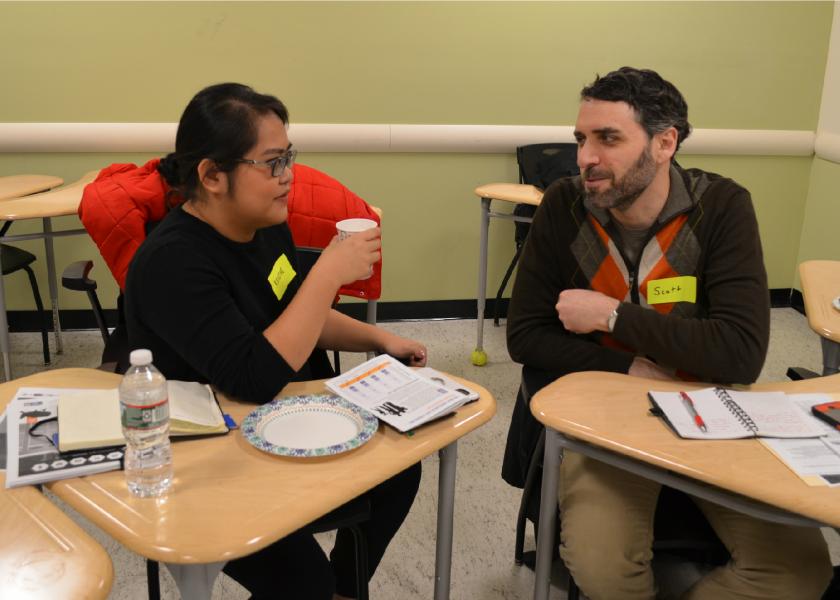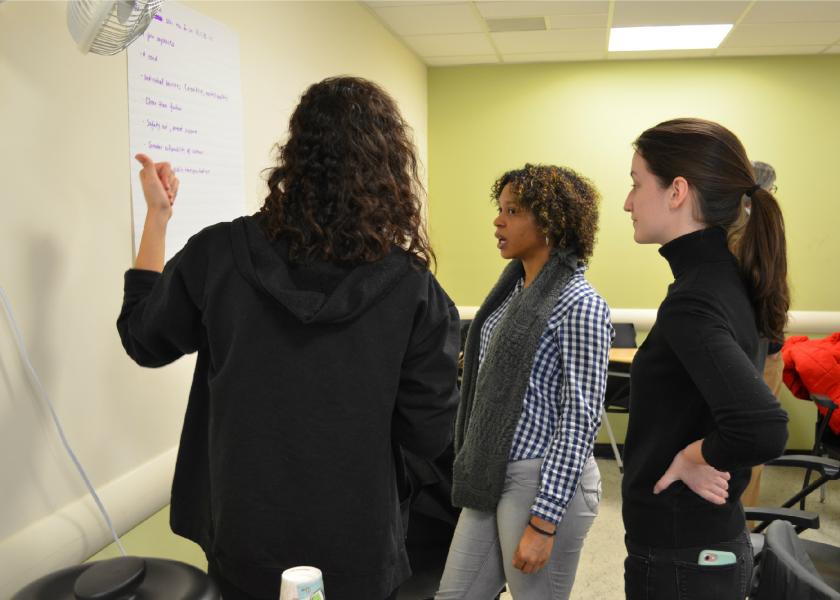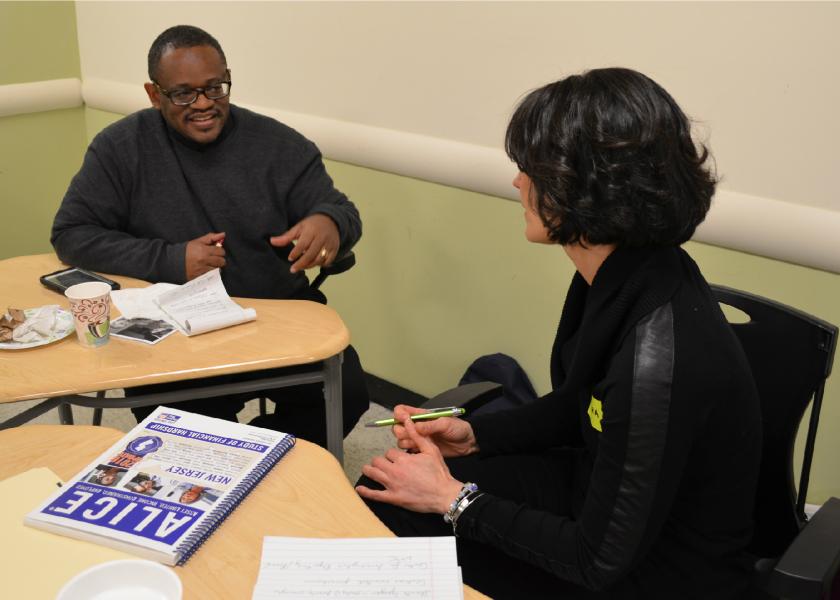April 13, 2018
37 people struggling to get by in New Jersey

“Humans of New Brunswick” by Wande Ogun
This post was originally published by Free Press and is republished with permission.
When it comes to telling stories of economic hardship, what can journalists learn from social workers? From oral historians? From artists? From community advocates?
It turns out, a lot.
At a recent workshop at Rutgers University convened by coLAB Arts and Free Press, a dozen people gathered to begin a community collaboration to lift up the stories of New Jersey residents struggling to get by in one of the country’s most expensive states.
In New Jersey, 37 percent of residents have trouble affording basic necessities, according to the United Way of Northern New Jersey. Our project, “37 Voices,” will feature interviews with 37 people living in the greater New Brunswick and Newark area who fall into this threshold — working but finding it hard to pay for basic needs.
The project’s roots lie in a 2017 collaboration between Rutgers University’s NJ Spark and Free Press. That effort focused on training student journalists in community-engagement techniques and telling the stories of New Brunswick’s working poor.
Free Press and the New Brunswick-based group coLAB Arts then decided to take the idea a step further by bringing on six freelance journalists and community partners to tell these stories in ways that would challenge misconceptions about people experiencing economic hardship — and inspire policy change.
This new collaboration comes out of nearly two years of community engagement, group meetings, deep listening, issue exploration and project piloting in New Brunswick.
Project partners include the Anti-Poverty Network of New Jersey, the Center for Cooperative Media at Montclair State University, the Center for Investigative Reporting, the Edward J. Bloustein School of Planning and Public Policy at Rutgers University, Feeding New Brunswick Network, NJ Spark, Oral History and Folklife Research, the PRAB and United Way of Northern New Jersey.
The journalist team is comprised of Mira Abou Elezz, Debbie Galant, Scott Gurian, Hank Kalet, Andaiye Taylor and Kristine Villanueva.
The first phase of the project will feature journalists doing community outreach and interviewing 37 people to capture their personal experiences. These interviews will be documented using oral-history techniques and turned into podcasts. Then coLAB Arts will transform interview transcripts into a stage play in 2019.
Researchers from Rutgers will look into overlapping themes from the stories, providing insight into how these personal experiences tie into larger structural or policy challenges around pay, housing, health care, child care, transportation and more in New Jersey.
First step: Building trust, sharing knowledge
Community organizations, artists, researchers and journalists joined together at the kick-off workshop in March. This gathering marked the first step to deepening relationships among group members, promoting a culture of listening and knowledge-sharing, addressing challenges around collaboration head on, and building trust among the people and groups involved.
Laura Bruno and Molly Rennie from the United Way of Northern New Jersey kicked off the workshop to dive deep into the ALICE Report, which stands for “Asset Limited, Income Constrained, Employed.”
The data in the report show how 37 percent of New Jersey residents are working but can’t afford basic necessities. Bruno and Rennie helped workshop participants grasp the nuances in the report and the experiences of people who are employed but lack financial stability.
Next, Free Press led a discussion on media portrayals of poverty and economic hardship. The conversation focused on how major news outlets hardly ever cover economic struggles; when they do, it tends to be in the form of a “special project” rather than an ongoing exploration of the root causes and policies that promote inequality.
We designed this session to give project collaborators a deeper understanding of the structural forces at play, with an eye toward evaluating how our collaboration could present stories that center people and paint a more holistic and compassionate picture of their experiences.
Workshop participants broke up into small groups to talk about their own experiences with economic hardship, and to think about how empathy could shape this project.
People talked about how pervasive economic inequality is — and how the perception of what it means to be “poor” may not line up with how people actually feel about their experiences.
People also reflected on how media outlets tend to judge people of color who are struggling — and respond to low-income White people with sympathy.
‘They have a story to tell’
Renee Wolf Koubiadis from the Anti-Poverty Network then spoke with participants about the need to build relationships with people who are struggling financially.
One of the keys, she said, is that people who are in crisis may not be willing to speak with reporters. “They have a story to tell,” she said, noting that it’s important to listen, show patience, accept that people may not respond right away, and establish safe spaces for people to share their experiences.
Next up was Molly Graham of Oral History and Folklife Research, who will be working with journalists involved in the project on capturing the stories and turning them into podcasts.
While she ran through techniques and strategies to document what she called “felt” experiences, the journalism team raised good questions — noting that how you build relationships, ask questions and document information in oral histories differs from how you approach traditional newsgathering.
Journalists and community experts discussed ways to address these challenges, talking about the difference between getting a good headline and getting a good story, and letting people tell their stories as opposed to going into an interview with a story in mind.
While there are different strategies for interviewing and getting information from people, good journalism and good oral history both tell stories in an authentic way that depicts people in all their complexity.
To round out the day, Anish Patel from Rutgers’ Bloustein School spoke about the research that will take place at the end of the project.
Each story will be tagged based on measurable data points from the ALICE Report, and tied to policy and legislation at the local, state and federal levels for further inquiry into the personal experiences of interviewees.
What excited the group was being able to take those personal experiences from the interviews and dive into the larger structures around economic inequality.
The interviews won’t just tell stories; they could lead to policy solutions.
A ‘groundbreaking’ collaboration
Everyone at the March workshop was excited about what this collaboration could produce, and thankful for the opportunity to engage in this ambitious project.
But the discussion wasn’t easy. Participants discussed the challenges involved in bringing together people from various fields to collaborate while respecting the role that each person or organization would play.
People also wrestled with questions about what the group was trying to produce. Was it journalism? Oral history? Art? Research? How could it be all of those things?
It’s a tricky challenge, since journalists pride themselves on being fair and independent. The storytelling involved in the project cuts across disciplines — but the way a journalist tells a story is different from how oral historians capture experiences, which varies from what plays well on the stage.
And the types of questions journalists ask to tell impactful stories may differ from what policy researchers might ask to produce academic research.
Anish Patel from Bloustein sensed this tension in the room as he closed his remarks. He reminded everyone that the project could be “groundbreaking”. Has this type of collaboration ever happened before, he wondered, with this many people from so many different backgrounds?
It’s an important point: No kind of collaboration is easy.
It’s not easy inside one’s own workplace. It’s even more difficult across newsrooms. So imagine the challenges that could pop up in a collaboration among journalists and community organizations, artists and researchers.
But that’s one of the central points of the project: that it would be challenging. These are individuals whose fields rarely overlap. But the role of journalism — and its associations with people and groups outside of the newsroom — is changing.
Community-journalism collaborations are still relatively new, but many of them have a power imbalance, with reporters holding all the cards. They ask the questions, they frame the story, they control the budgets and their newsrooms receive funding grants for or revenue from the journalism being produced.
Those on the journalism side make almost all of the decisions. That’s not a true collaboration.
From dating to going steady
Our project is an attempt to address that:
coLAB Arts, not a media outlet, received funding from the Geraldine R. Dodge Foundation, in partnership with the Knight Foundation, for the project.
Journalists are playing a single role in a much larger, multi-faceted effort.
And community groups are equal partners in the decision-making process.
Along the way, reporters will learn new skills, build strong relationships and share knowledge about the practice of journalism with their collaborators.
It’s the difference between going on a date and going steady.
Community-journalism collaborations are a natural outgrowth of community engagement, which — when done well — connects reporters and residents to listen to and learn from one another.
Collaboration is another step toward building trust and changing how people participate in journalism, a practice that requires mutual buy-in, and investment in time and resources. The ideal end goal: new ways of telling our communities’ stories.
The notion that journalists need to be separate from their communities to do their jobs is outdated, and could be one of the reasons why so many people don’t trust reporters. Our work in News Voices for the past three years has sought to change that, to bring communities and newsrooms closer together, and to find ways for journalism to strengthen communities.
This project is one step toward seeing if that’s possible. Along the way we will document this process and share what we learn so others can embark on similar collaborations. As this experiment moves forward, we hope you’ll have a chance to learn with us.
Check out some photos from our workshop below:
- Dan Swern, coLAB Arts
- Dan Swern, coLAB Arts
- Dan Swern, coLAB Arts
- Dan Swern, coLAB Arts
- Dan Swern, coLAB Arts
